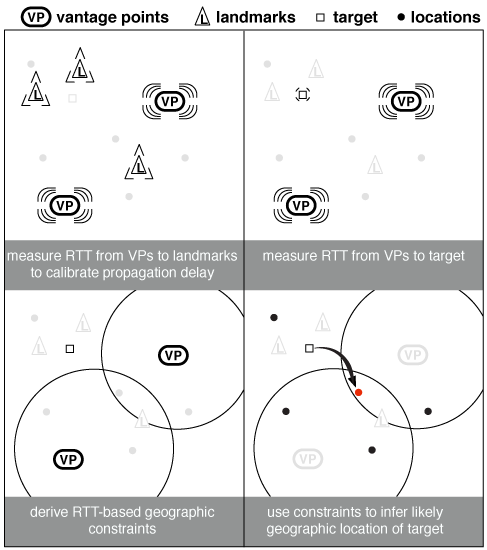Geolocation Terminology: Vantage Points, Landmarks, and Targets
November 17th, 2016 by Bradley HuffakerWhile reviewing a recent paper, it occurred to me there is a pretty serious nomenclature inconsistency across Internet measurement research papers that talk about geolocation. Specifically, the term landmark is not well-defined. Some literature uses the term landmark to refer to measurement infrastructure (e.g., nodes that source active measurements) in specific known geographic locations [Maziku2013,Komosny2015]. In other literature the same term refers to locations with known Internet identifiers — such as IP addresses — against which one collects calibration measurements [Arif2010,Wang2011,Hu2012,Eriksson2012,Chen2015].
In pursuit of clarity in our field, we recommend the following terms and definitions:
- A Vantage Point (VP) is a measurement infrastructure node with a known geographic location.
- A Landmark is a responsive Internet identifier with a known location to which the VP will launch a measurement that can serve to calibrate other measurements to potentially unknown geographic locations.
- A Target is an Internet identifier whose location will be inferred from a given method. Depending on the type of identifier and inference methodology, this may not be a single well defined location. Typically, some targets have known geographic locations (ground truth), which researchers can use to evaluate the accuracy of their geolocation methodology.
- A Location is a geographic place that geolocation techniques attempt to infer for a given target. Examples include cities and ISP Points of Presences (PoPs).
Not all papers need to use all terms. Below we depict a simple constraint-based geolocation algorithm to show how we understand these terms in practice.
[Potential useful resource, although not actively maintained: CAIDA’s Geolocation Bibliography]
